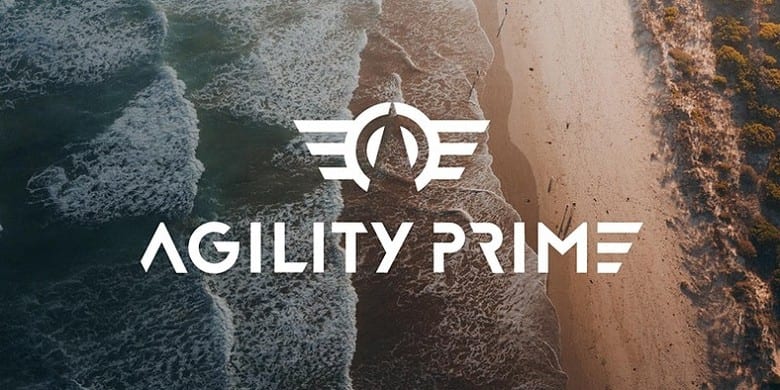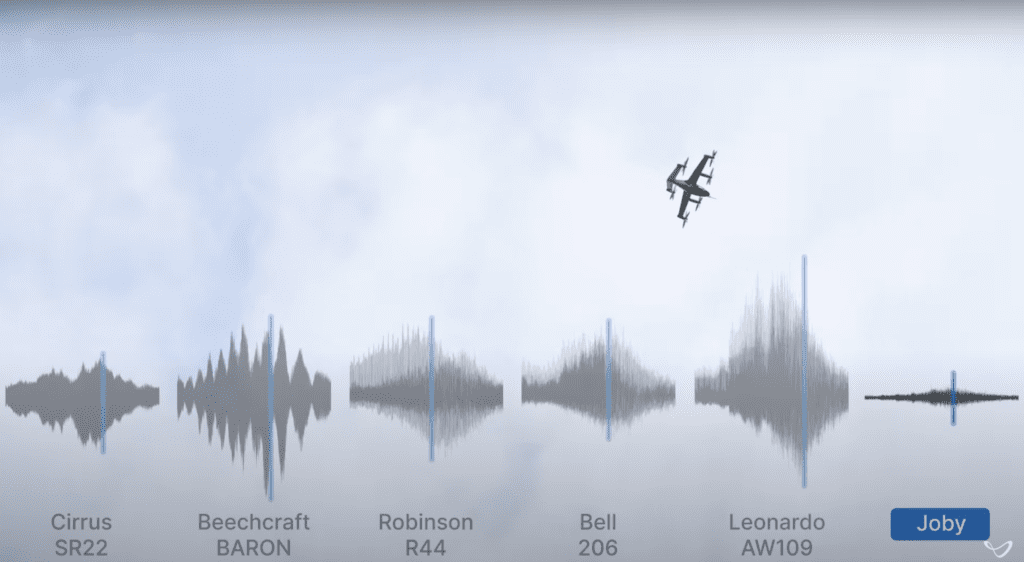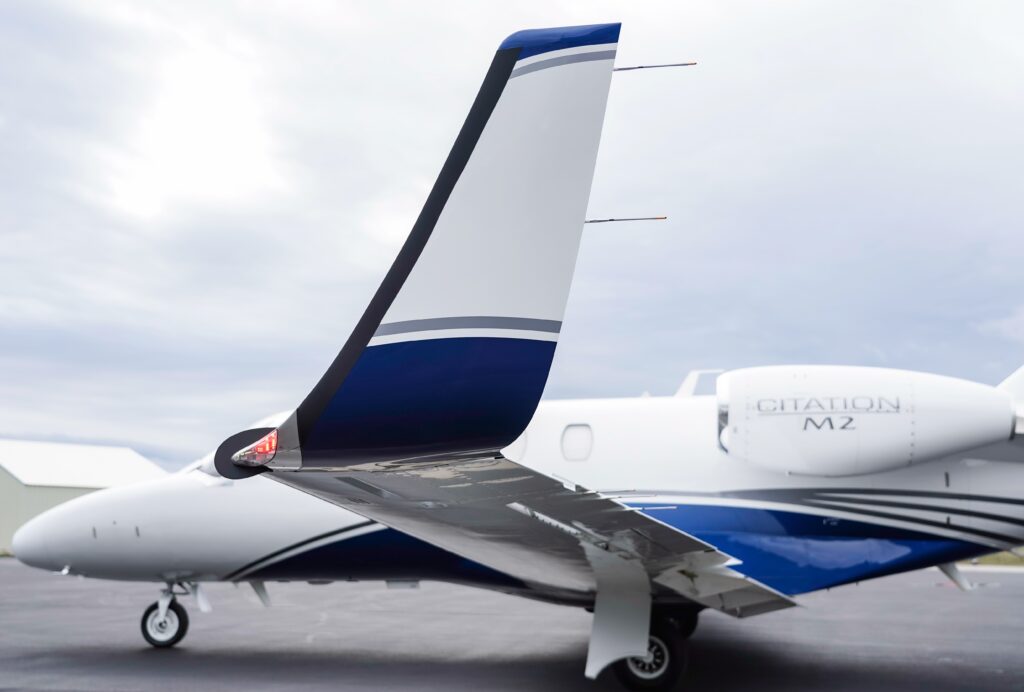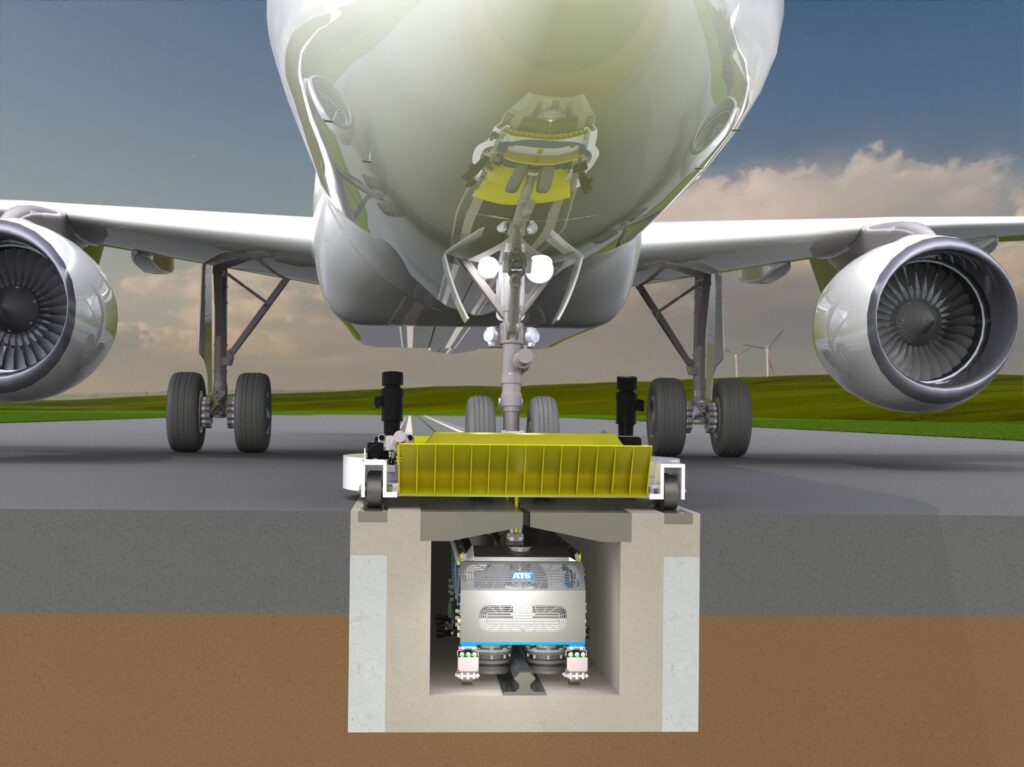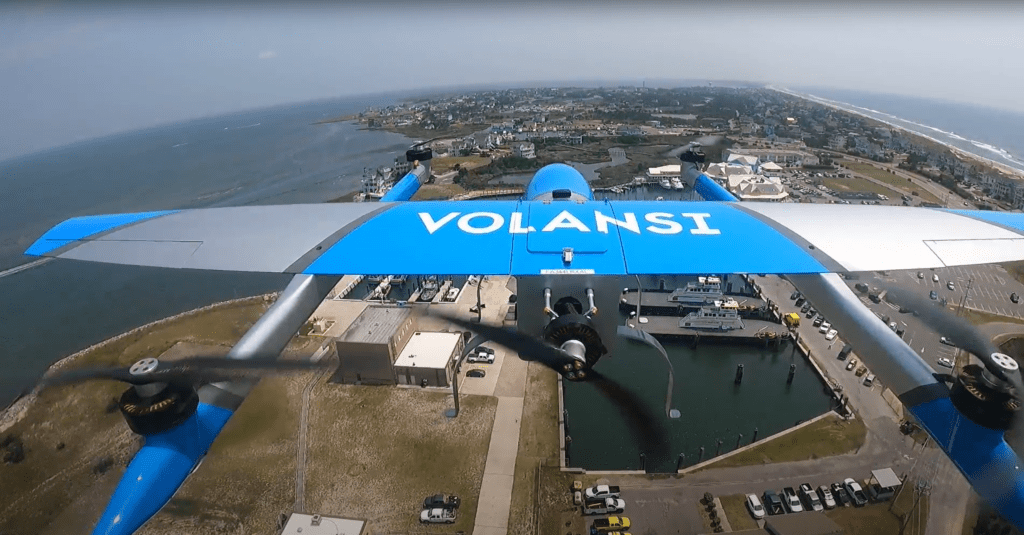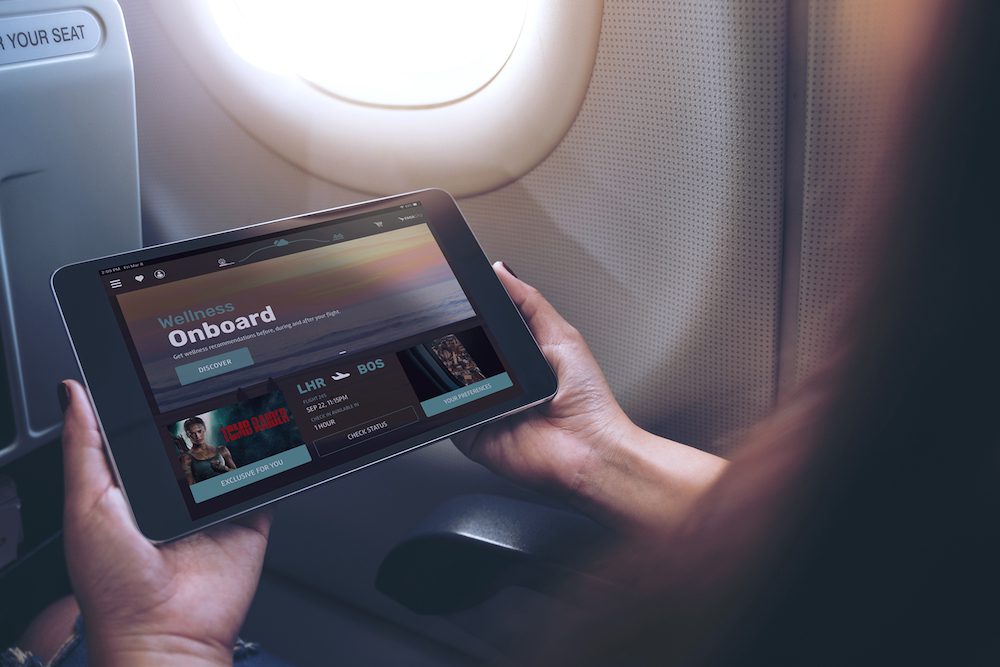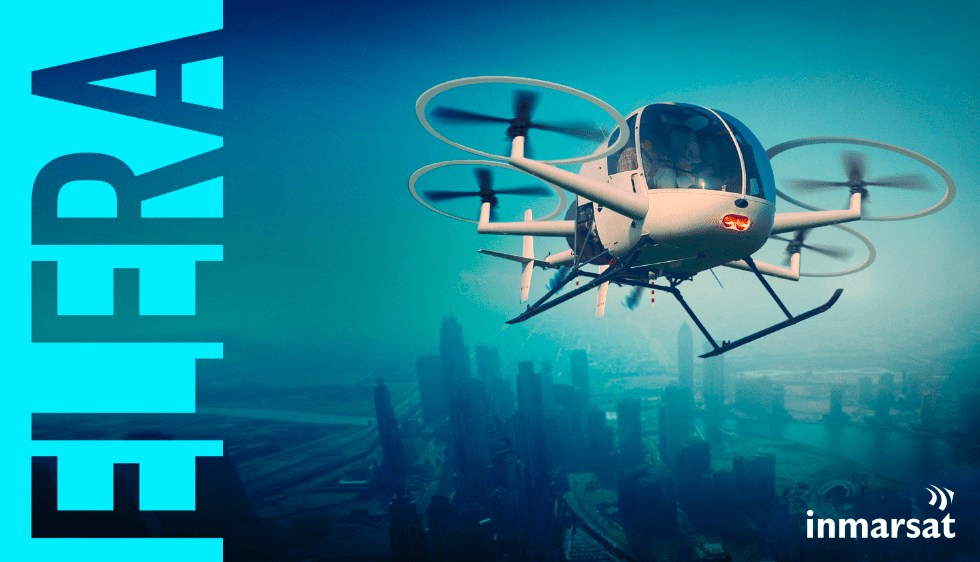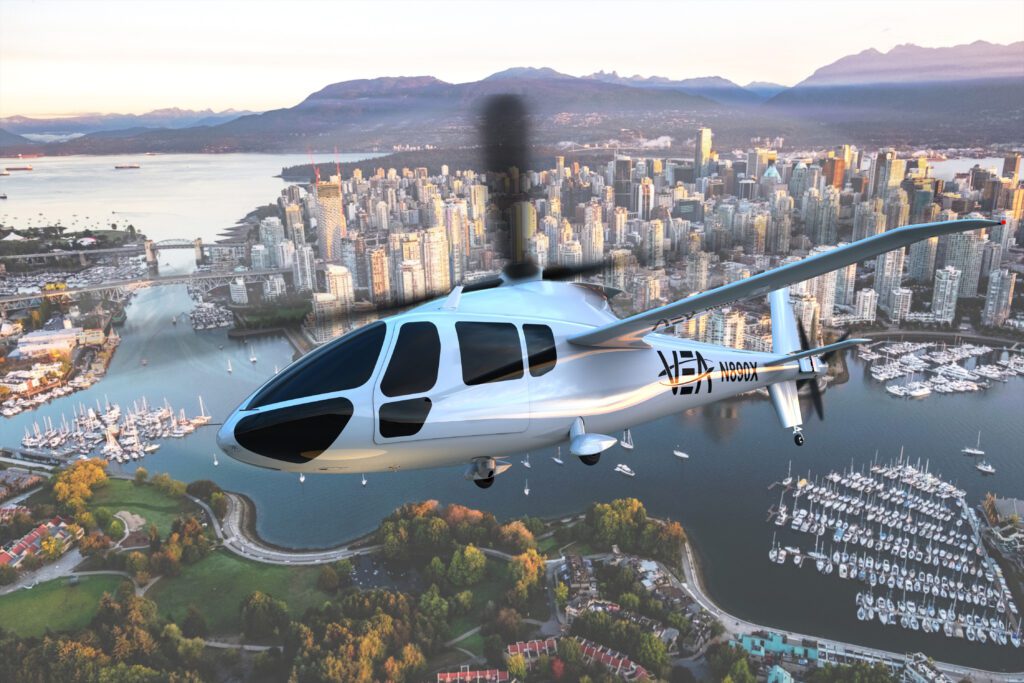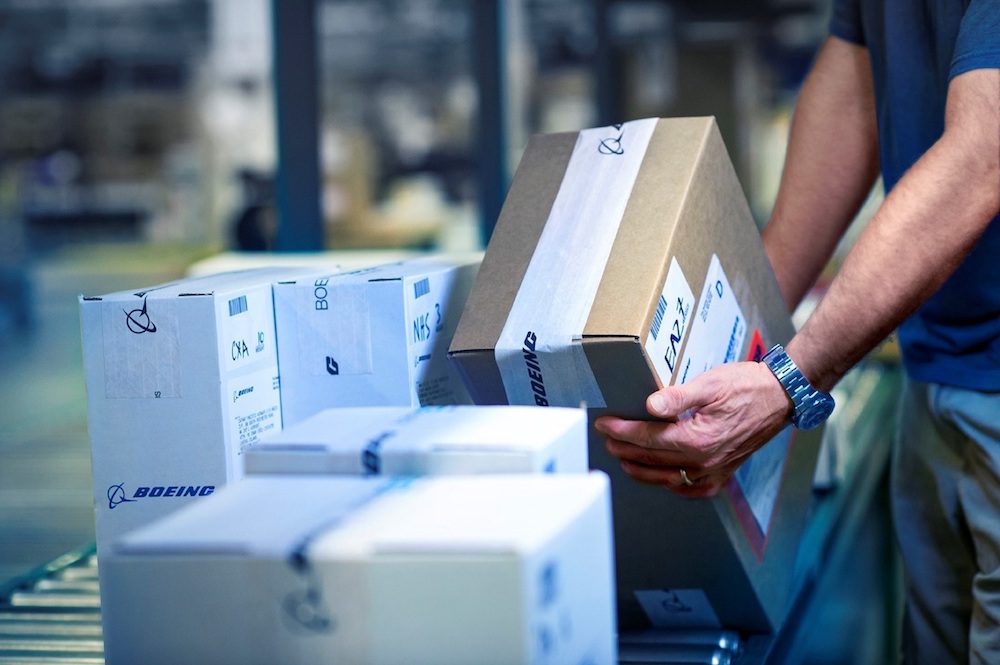
Check out the Aug. 22 edition of What’s Trending in Aerospace, where editors and contributors for Avionics International bring you some of the latest headlines and updates happening across the global aerospace industry.
Commercial
Qantas Targets Return to ‘Covid-safe’ International Flying by December
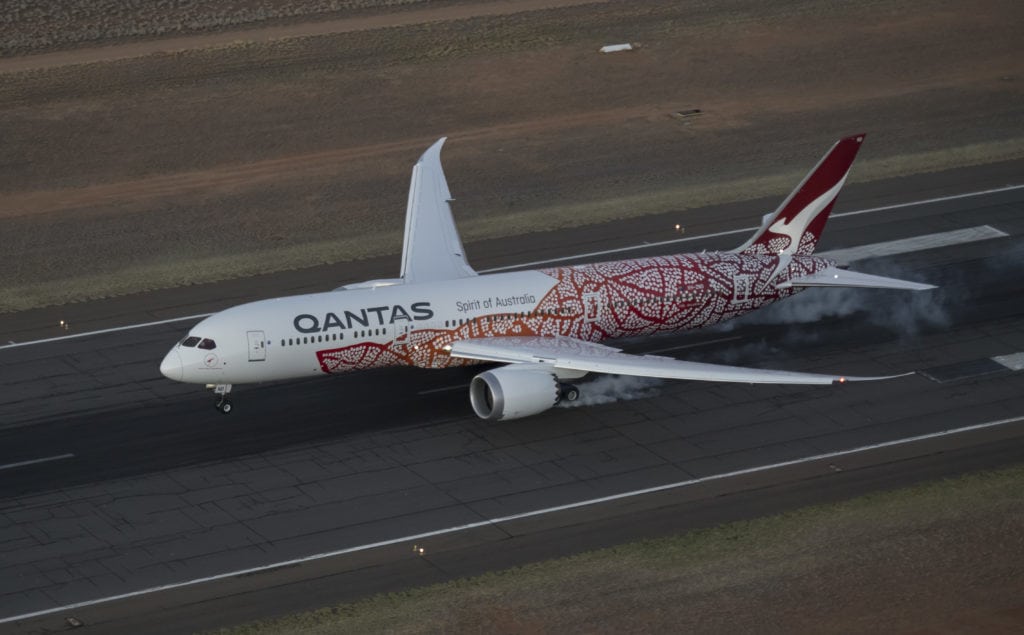
(Qantas Group)
The Qantas Group posted a $16 billion revenue loss in its full-year 2021 results published on Aug. 26, as the Australian group of airlines looks to restart international flying by the end of the year.
Along with its 2022 results, Qantas outlined its eventual return to international flying by December, to “key markets like the UK, North America and parts of Asia have high and increasing levels of vaccination,” according to an Aug. 26 press release.
“From mid-December 2021, flights would start from Australia to COVID-safe destinations, which are likely to include Singapore, the United States, Japan, United Kingdom and Canada using Boeing 787s, Airbus A330s, and 737s and A320s for services to Fiji,” Qantas said in the release. “Flights to destinations that still have low vaccine rates and high levels of COVID infection will now be pushed out from December 2021 until April 2022 – including Bali, Jakarta, Manila, Bangkok, Phuket, Ho Chi Minh City and Johannesburg. Levels of travel demand – and therefore, capacity levels – will hinge largely on government decisions on alternative requirements to mandatory hotel isolation for fully vaccinated travelers.”
DGCA Clears Boeing 737 MAX for Flights in India
The Directorate General of Civil Aviation (DGCA) published an order on Aug. 26 that clears the Boeing 737 MAX to start flying in Indian airspace again.
DGCA first grounded the MAX in March 2019 following the Ethiopian Airlines and Lion Air crashes. The agency cites the design changes included in the airworthiness directives published by the Federal Aviation Administration and the European Aviation Safety Agency last year.
“Worldwide, 17 regulators have permitted operation of Boeing 737 Max airplane. A sizable number airlines (34) with B737 Max airplane are operating currently and have attained 1,22, 824 total departures with 2,89,537 cumulative hours since the un-grounding from 9th December 2020, with no untoward reporting,” DGCA said in the order.
Delta Air Lines Expands Fleet with New Airbus A321neo Order

A computer generated rendering of Delta’s Airbus A321neo. (Airbus)
Delta is continuing its 2021 fleet modernization strategy with a new agreement that will add 30 Airbus A321neo aircraft to its fleet.
The aircraft are being converted from purchase rights into firm orders under an existing A321neo agreement Delta has with Airbus. This marks the latest order conversion activity between Delta and the French airframe manufacturer, following a similar transaction in April when Delta and Airbus converted 25 A321neo purchase rights into firm orders and added 25 incremental A321neo options, according to an Aug. 24 press release.
Boeing Reaches $1 Billion E-Commerce Parts Milestone

Boeing has achieved what the company describes as an “e-commerce milestone,” reaching $1 billion in online orders for aircraft parts and services, according to an Aug. 26 press release.
The milestone was driven by “e-commerce advancements” and increased demand from commercial services customers, indicating the continued market recovery from the impact of COVID-19, according to Boeing.
“We’re seeing innovation accelerated by necessity across our services business as the aerospace industry emerges from one of the toughest periods we’ve faced,” Ted Colbert, president and chief executive officer, Boeing Global Services said in the release. “The aftermarket supply chain solutions Boeing provides, such as parts support, are an essential service for our customers as they emerge from the pandemic. The digital advancements that we’re driving enable us to be nimble in our response to the uneven recovery and simplify how Boeing supports our customers.”
Military
Qatar’s F-15 Gets a Name

(Boeing)
The F-15QA will be the name of Qatar’s F-15 fighter jets, Boeing announced in an Aug. 25 press release.
The aircraft name was a collaboration between Boeing, the U.S. Air Force, and the Qatar Emiri Air Force, according to the release. The first of these aircraft will arrive in Qatar this year once pre-delivery pilot training commences.
“The rollout of the F-15QA is momentous, not just in terms of capability but also in terms of the enhanced partnership it represents. The relationship the United States shares with Qatar is critical to the stability and security of the central command area of responsibility, and we are grateful for our coalition partner’s continued focus on building interoperability and combined readiness,” Lt. Gen. Greg Guillot, commander of 9th Air Force, said in a statement. “It is a privilege and honor to stand with our Qatari counterparts this day and every day.”
Boeing will operate an aircrew and maintenance training center at Al Udeid Air Base in Qatar through 2024, according to the release.
“The Qatar F-15QA program further enhanced next-generation technologies in the advanced F-15 such as the fly-by-wire flight controls, an all-glass digital cockpit and contemporary sensors, radar and electronic warfare capabilities,” Prat Kumar, vice president of the F-15 program, said in a statement. “Driven by digital engineering and advanced manufacturing, these aircraft represent a transformational leap for the F-15. The F-15QA will enhance the superiority of the QEAF with more speed, range and payload than any fighter in the world.”
DoD and DHS Receive Final C-sUAS Solution from ELTA North America

ELTA North America’s OTM v4 for U.S. Department of Defense
ELTA North America has completed deliveries of its counter small unmanned aircraft system (C-sUAS) solution to the Department of Defense and the Department of Homeland Security, the company announced in an Aug. 24 press release.
ELTA’s C-sUAS solution, the On-The-Move V4 (OTM V4) is a multi-sensor, multi-layered mobile system, according to the release. The system provides early warning, detection, disruption, and defeat capabilities. It also provides multiple defeat capabilities with minimal to no collateral damage.
“The OTM V4 is a truly innovative C-sUAS offering that we are proud to provide to our military forces and DHS security agents in the field,” ELTA North America CEO William Ostrowski, said in a statement. “Its ability to provide increased standoff for the safety of troops will remain a critical priority as we continue to develop advanced defense technologies.”
The OTM 4V was part of the Irregular Warfare Technical Support Directorate (IWTSD) Mobile C-sUAS Defense-in-Depth Capability, according to the release.
“We are very pleased with the progress ELTA North America, D-FEND Solutions, and Smart Shooter has made on the spiral development and integration of the advanced Mobile C-sUAS Defense-In-Depth Capability,” IWTSD Tactical Offensive Support Program Manager Mike Trexler said in a statement. “We look forward to continuing small tactical team operational testing and evaluations in a variety of scenarios and environments in FY 22.”
F-35 Parts to Be Catalogued in System by End of Next Year, Program Says

A forklift driver from Defense Logistics Agency Distribution Oklahoma City moves engine parts for the F-35 at the Oklahoma City Air Logistics Complex. (DLA)
In 2019, the Pentagon Inspector General found that the F-35 program was unable to track parts adequately for the Lockheed Martin fighter, as the program had not chosen an Accountable Property System of Record (APSR) required by DoD Instruction 5000.64 until October 2017 and had not catalogued parts in the system.
In response to email questions, the F-35 Joint Program Office (JPO) at Naval Air Station Patuxent River, Md. said on Aug. 26 that it will have such parts verified and catalogued by the end of next year.
“The F-35 Joint Program Office (JPO) is on track to meet scheduled milestones, and to have the Accountable Property System of Record (APSR) populated with verified property records by Dec. 31, 2022,” the program said. “The JPO is working directly with the Defense Logistics Agency Program Management Office for the JPO’s designated APSR, the Defense Property Accountability System (DPAS). The JPO has made considerable progress executing a multi-faceted approach to implement the APSR, while concurrently verifying property through physical inventory.”
Connectivity
Next Starlink Satellites Will Have Inter-Satellite Links, Shotwell Says
Inter-satellite links are the future of satellite data transmission. This was one point that leaders across the space and satellite value chain could agree on while speaking Tuesday, Aug. 24 at the Space Symposium in Colorado.
SpaceX COO Gwynne Shotwell said that every Starlink satellite that is launched in the future will be equipped with laser terminals, starting with the next launch in about three weeks.
“We’re flying a number of laser terminals right now in space, and we’re working on probably our third generation now,” Shotwell said. “In fact, that’s why we haven’t flown Starlink for weeks, because we wanted the next set to have the laser terminals on them.”
Euroconsult Predicts Strong Rebound for IFC Market
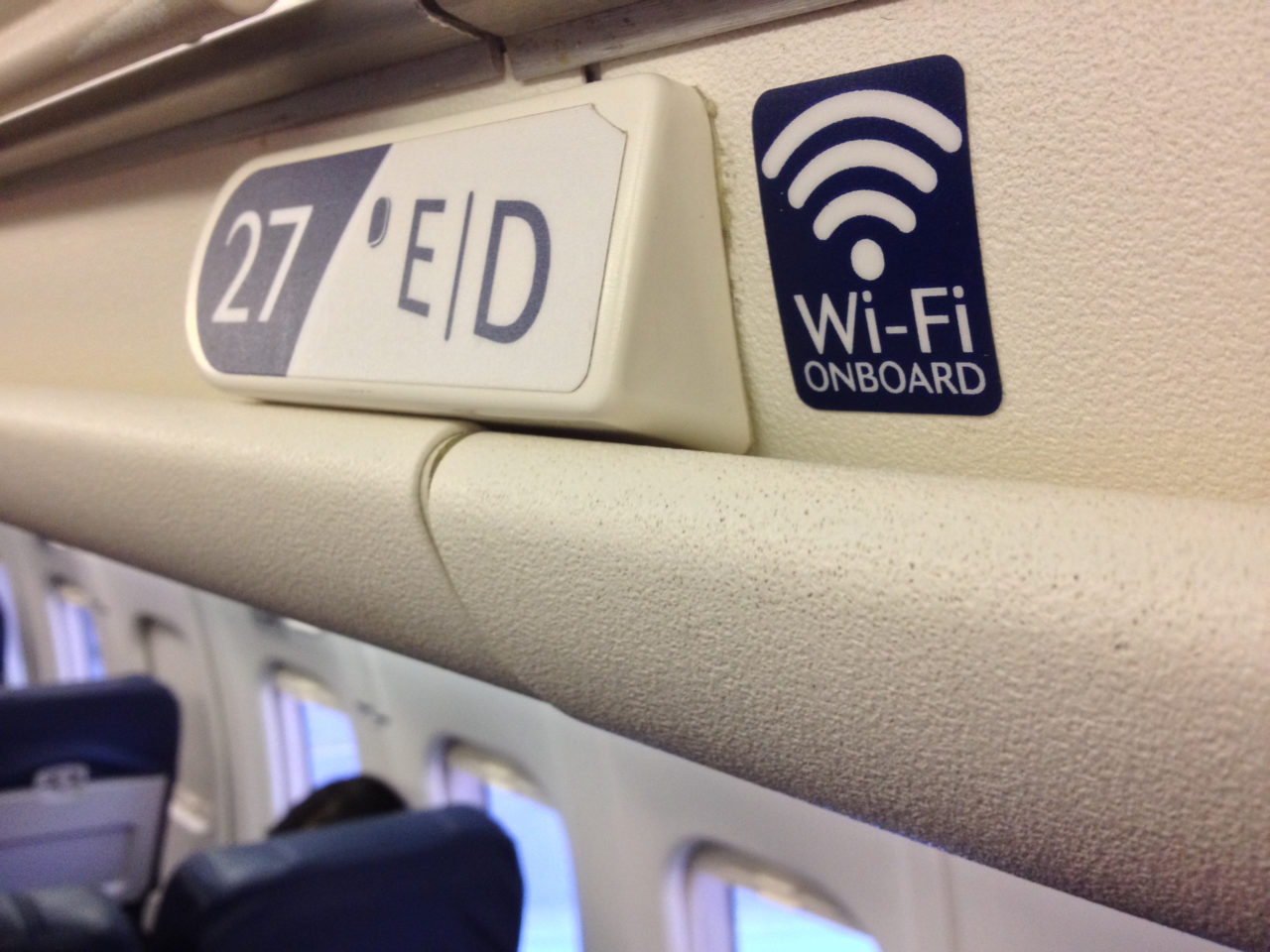
Euroconsult predicts that the number of connected aircraft could double by the end of this decade, and there will be between 16,000 and 20,000 connected aircraft by 2030. This was one of the highlights of its recent “Prospects for In-Flight Entertainment & Connectivity (IFEC) 2021” report, which Euroconsult announced details of Aug. 23.
However, Euroconsult notes that this number is lower in relation to previous forecasts, as a further result of the pandemic. However, even the lower-case scenario of 16,000 aircraft shows strong growth over the course of this decade.
The 2021 edition shows that around 9,000 aircraft across 115 airlines are currently equipped with In-Flight Connectivity (IFC) terminals — a reduction of 2.5 percent compared to the previous year. Over 80 percent of these aircraft were connected through satellite connectivity, with the remainder connected through Air-to-Ground.
eVTOLs
Varon Vehicles Partners with D3 Technologies

D3 is developing an automated deep-tech air traffic control system for UAM for automated flight. (D3 Technologies)
Varon Vehicles has announced a new traffic management system partner for its infrastructure network, D3 Technologies, according to an Aug. 24 press release.
“We are convinced that a future UAM ecosystem must be interoperable and designed on a highest assurance level with a guiding central instance,” Achim Kostron, Chief Commercial Officer of D3 Technologies, said in a statement. “We are delighted to collaborate with Varon Vehicles and their approach of infrastructure networks developing concrete use-cases and driving them to implementation.”
D3 Technologies has developed an automated air traffic management system for UAM vehicles. Varon Vehicles’ infrastructure network will include takeoff and landing infrastructure, a fleet of UAM aircraft, and a network to connect the aircraft and infrastructure.
“Our Traffic Management Systems (TMS) will be the central brains of our operations as it is there that our traffic of aircraft will be orchestrated in a safe and reliable manner, without burdening air traffic control or any other traditional aviation assets,” Felipe Varon, CEO and Founder, said in a statement. “We are delighted to be collaborating with D3 Technologies as they bring serious capabilities to an integrated solution providing highest aviation safety considering weather management, off-nominal situation management, airspace architecture design and real time aircraft monitoring capabilities, which are crucial for our TMS requirements.”
Archer Finds Infrastructure Partner in REEF
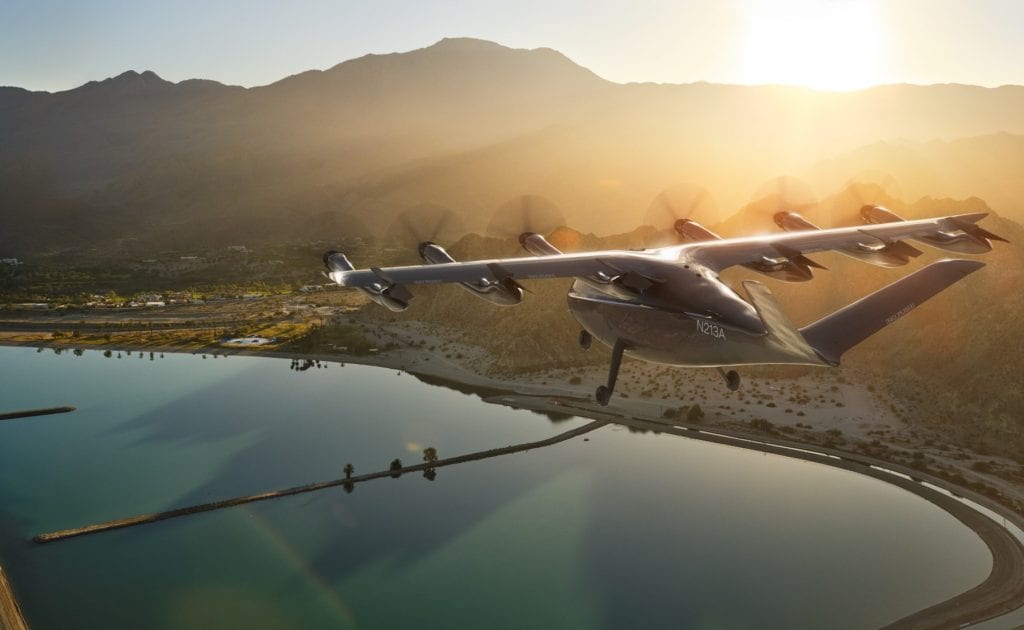
Archer Aviation’s eVTOL aircraft will use a blend of current FAA Part 23, 27, 33, 35, and 36 requirements. (Archer Aviation)
The electric air taxi company Archer has formed a new partnership with REEF, mobility and logistic hub operator, according to an Aug. 24 release.
“Archer is focused on developing urban aerial ridesharing networks that will ease the issues caused by excessive city congestion” Adam Goldstein, co-Founder and co-CEO of Archer, said in a statement. “We believe that working with REEF will allow us to accelerate our mission to transition congested urban areas to more sustainable forms of transportation. The ability to build out our early vertiports with light retrofitting of existing structures would allow us to scale operations while maintaining our focus on affordability for our customers. We’re thrilled to announce this strategic relationship as we continue to execute on our roadmap towards bringing urban air mobility to reality.”
Archer will use its data technology, Prime Radiant, to find optimal landing sites within REEF’s existing network of over 4,800 parking garages in North America.
“One of REEF’s core areas of focus is to reduce traffic congestion and carbon emissions by supporting incredible transportation technologies like those Archer is building,” George Fallica, REEF’s Chief Revenue Officer, said in a statement. “Archer’s focus on sustainability and transforming the everyday urban travel experience aligns closely with our own mission. We’re excited to be working with them on plans to reshape city landscapes and make existing infrastructure even more functional.”
Bristow and Electra.aero Form Partnership
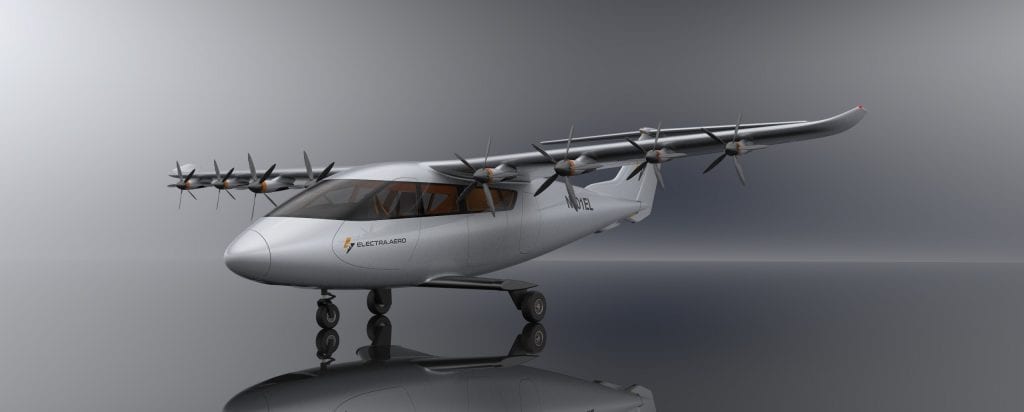
Shown here, Electra’s ultra-short takeoff and landing aircraft can deliver nearly triple the payload capacity, an order of magnitude longer ranges, and less than half the operating costs. Electra is the most sustainable choice for advancing urban and regional air mobility. (Electra)
Global flight solutions provider Bristow has formed a partnership with hybrid-electric short take-off and landing (eSTOL) aircraft maker Electra.aero that includes a joint development agreement and purchase agreement for 50 of the company’s aircraft, according to an Aug. 26 press release.
“Bristow’s deep experience operating aircraft across a variety of missions is an excellent complement to the Electra team’s extensive experience in designing and building innovative aircraft. This collaboration will lead to a more rigorous aircraft capable of addressing operators’ needs across a variety of use cases and will help Electra develop and certify an eSTOL aircraft in as short a period of time as possible,” John S. Langford, Founder and Chief Executive Officer of Electra.aero, said in a statement. “As our principal launch operational customer, Bristow will benefit from early access to Electra’s aircraft, which will deliver more than twice the payload, fly longer ranges, and have substantially lower operating costs than vertical take-off alternatives — with much less certification risk. We expect to deliver 50 or more aircraft to Bristow to provide low-emission transport services in exciting new markets.”
The partnership will include collaboration on technical development, certification, marketing, and future operations of Electra’s eSTOL aircraft, according to the release.
“Just as Bristow pioneered the vertical transportation market some 70+ years ago, this MOU sets the stage for early collaboration and development between Bristow and Electra for a new class of aircraft that will allow us to take advantage of the unique capabilities of electric and hybrid power generation technologies to substantially lower carbon emissions and operating costs. This will allow us to expand our expertise providing sustainable, innovative and efficient vertical lift and aerial transport solutions into new potential end markets like moving time-sensitive cargo and passengers regionally,” Bristow President and Chief Executive Officer Chris Bradshaw said in a statement. “As today’s global leader in vertical lift, Bristow can leverage our operational expertise to help Electra design and build the next generation of aircraft that fully utilizes the eSTOL concept in existing and new end markets.”
Space
Virgin Orbit To Go Public in SPAC Deal at $3.2B Valuation
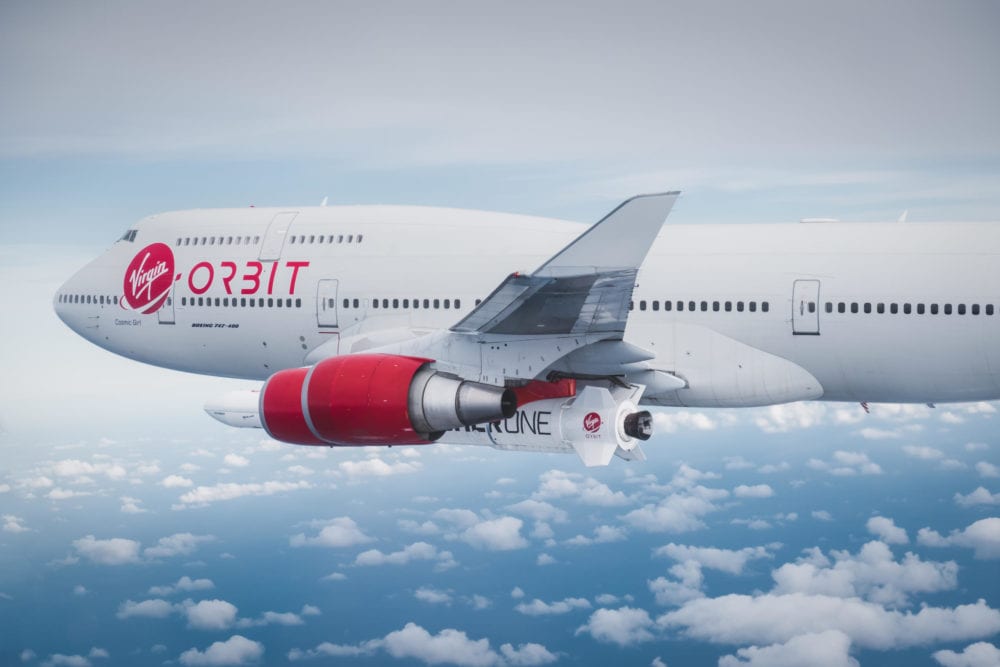
Virgin Orbit LauncherOne and Cosmic Girl. (Virgin Orbit)
Virgin Orbit is taking a special purpose acquisition company (SPAC) merger to go public in a deal that values the company at $3.2 billion.
The launcher announced Monday that parent company Vieco USA, Inc. will combine with SPAC NextGen Acquisition Corp. II. The merger is expected to provide $483 million in proceeds. This includes a $100 million PIPE backed by Boeing and AE Industrial Partners, in addition to existing Virgin Orbit investors and NextGen.
NASA SpaceX Cargo Resupply Mission Launches to International Space Station
The latest SpaceX Dragon resupply spacecraft is bound for the International Space Station after launching at 3:14 a.m. EDT Sunday on a Falcon 9 rocket from Launch Complex 39A at NASA’s Kennedy Space Center in Florida, according to an Aug. 29 press release.
The cargo Dragon, launched on SpaceX’s 23rd Commercial Resupply Services mission, is scheduled to autonomously dock at the station around 11 a.m. Monday, Aug. 30, and will remain at the station for about a month, according to NASA. This latest SpaceX Dragon mission is carrying more than 4,800 pounds of science experiments, crew supplies, and spacecraft hardware.
The post What’s Trending in Aerospace – August 29, 2021 appeared first on Aviation Today.
—————
Boost Internet Speed–
Free Business Hosting–
Free Email Account–
Dropcatch–
Free Secure Email–
Secure Email–
Cheap VOIP Calls–
Free Hosting–
Boost Inflight Wifi–
Premium Domains–
Free Domains










